|
  
WEAPONS
OF OKINAWA
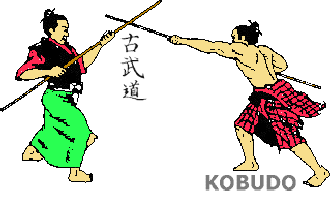
Kobudo
is an old Okinawan martial art utilizing weapons, most of which
are farming or fishing implements. The word kobudo is made up of
the words "koryo" which means ancient, and "budo",
which means "martial art", but in the specific sense of
an art that is studied for personal betterment (unlike "bujutsu",
which also means martial art, but in the sense of the training of
a soldier to be used in the military). So, kobudo basically means,
"ancient martial art".
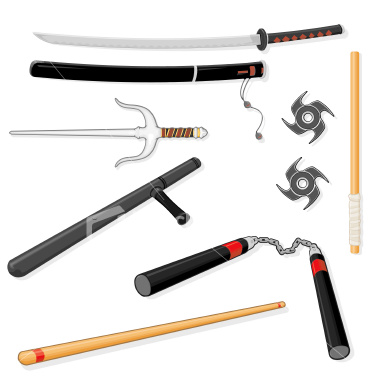
BELOW ARE PICTURES OF OLD TRADITIONAL MARTIAL ART WEAPONS
SOURCE - MARTIAL ARTS MUSEUM - OKINAWA
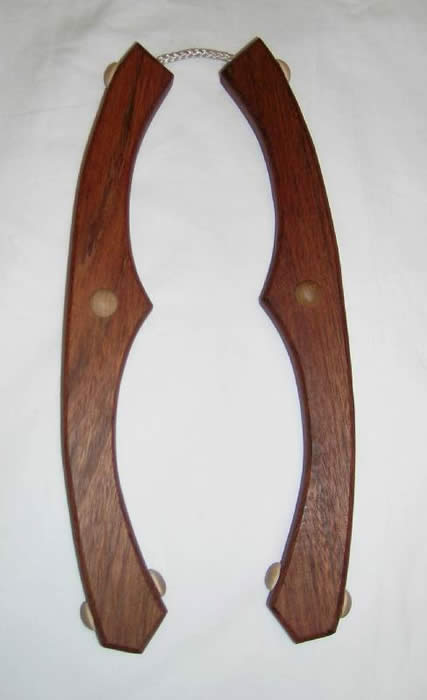 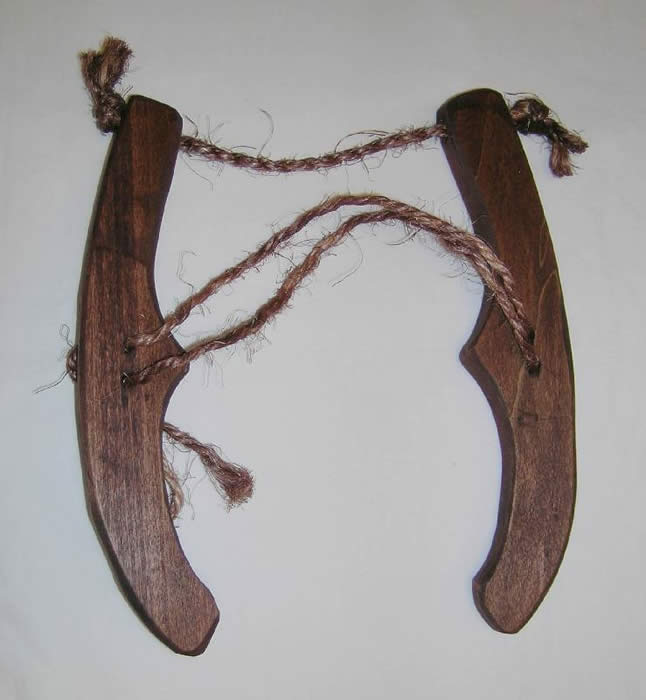 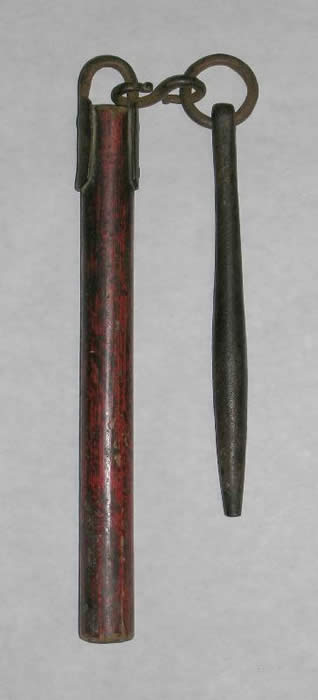 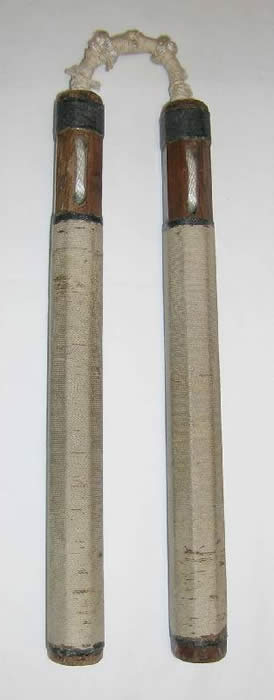 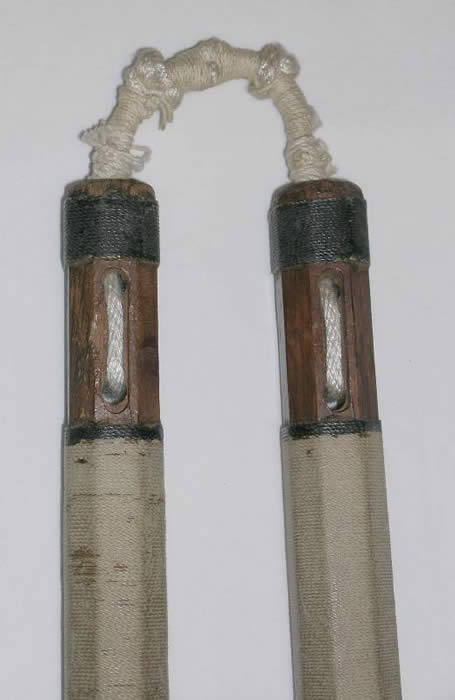
NUNCHAKU
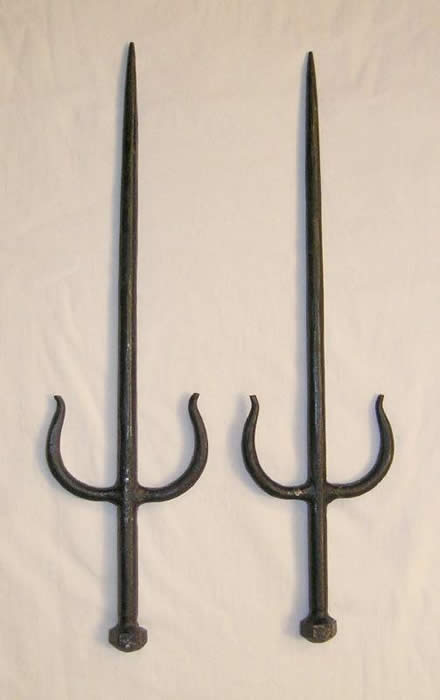 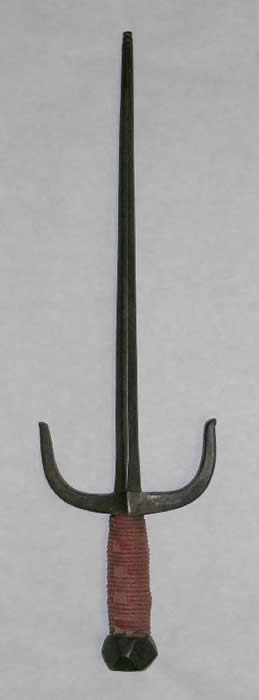 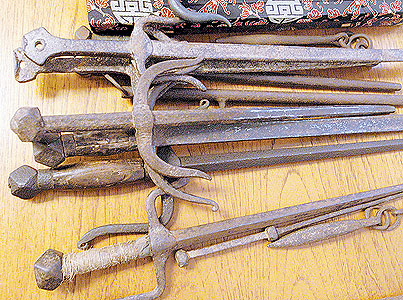
SAI
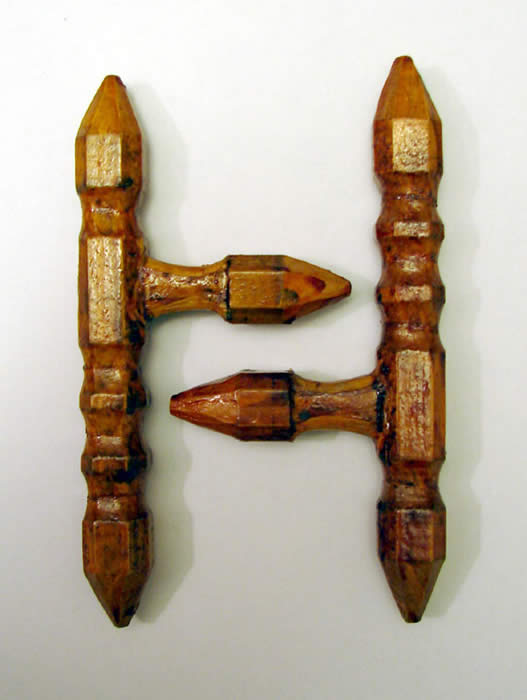 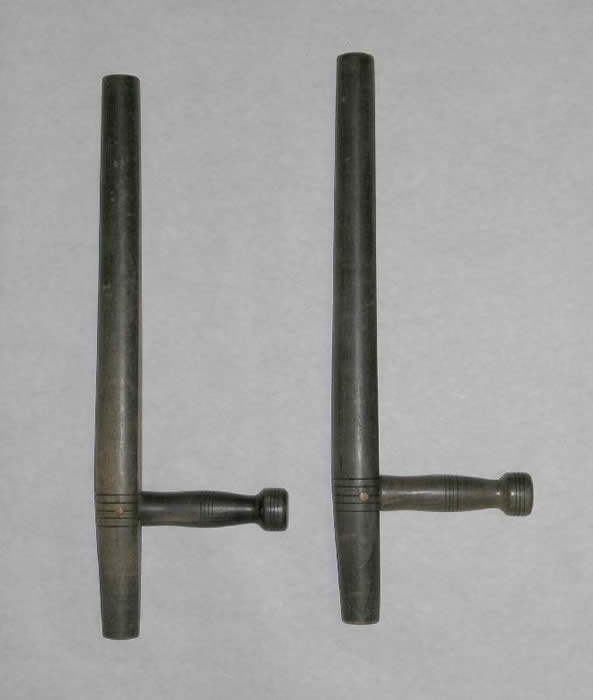
TECCHU OR KUBUTAN TONFA
--------------------------------------------------------------------------------
BO (LONG STAFF)
Approximately 6 foot long.
The Bo, an implement said to be derived from the tenbib, which was
a wooden staff that was slung across the shoulders in order to transport
buckets of water, baskets, harvested crops or buckets of milk or fish, one at each end of the bo. The word "bo" is merely the Japanese word for wooden staff weapons and the art of wielding the bo is bojutsu.The most popular type of bo is the
rokushaku, which measures six feet in length and 1 1/4 inches thick
at the center, tapering down to 3/4 inch at the ends. Other types
of bo range in length from four to nine feet, and can be round (maru-bo),
four-sided (kaku-bo), six sided (rokkaku-bo), or eight-sided (hakkakubo).
The most common bo kata are Shushi- No-Kon, Choun-No-Kon, Sakugawa-No-Kon,
Tsuken-No-Kon, and Shishi-No-Kon.
The basic purpose of the bo is increasing the force delivered in a strike, through leverage and to benefit from the extra distance this weapon affords. The user´s relatively slight motion, effected at the point of handling the bo, results in a faster, more forceful motion by the tip of the bo against the object or subject of the blow thus enabling long-range crushing and sweeping strikes. The bo may also be thrust at an opponent, allowing one to hit from a distance. It also is used for joint-locks, thrustings of the bo that immobilize a target joint, which are used to non-fatally subdue an opponent. The bo is a weapon mainly used for self-defence, and can be used to execute several blocks and parries.
The bo staff is originally thought to have been used to balance buckets or baskets.
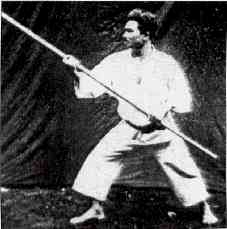
--------------------------------------------------------------------------------
JO (SHORT STAFF)
The Jo, a four foot staff Japanese in heritage. May be applied like
a katana, although there is a separate Japanese art called jojutsu.
 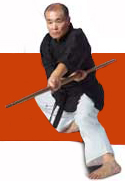
--------------------------------------------------------------------------------
EKU (BOAT OAR)
Eku, or (Ieku), a common boat oar manipulated similar to the bo.
As Kobudo was derived from farming and fishing tools, the eku was
and is a popular weapon.
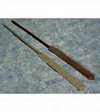
--------------------------------------------------------------------------------
NAGINATA (PIKE STAFF)
Naginata, a scimitar like blade, 3 feet in length fixed to a 6 foot
staff. Also referred to as the "women's spear," because
women of the Japanese military class were expected to have perfected
it's use by the age of 18.
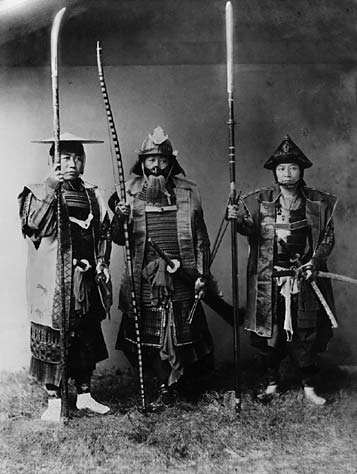
--------------------------------------------------------------------------------
NUNTI (FISHING SPEAR)
The Nunti (fishing spear) is used in a similar fashion to the Bo.
The 15" central staff has two prongs, One facing away and one
facing toward the opponent. It can be used to spear, strike, or
hook the opponent with the backward prong.
--------------------------------------------------------------------------------
KUWA (HOE)
The Kuwa is a weapon unique to Matayoshi Kobudo. A four foot garden
hoe, the kuwa is manipulated similar to the Bo.
--------------------------------------------------------------------------------
NUNCHAKU (2 HANDLE FLAIL)
The Nunchaku is a weapon made from a horse bridle strap and a tool
that was used to pound grain or rice. In the Matayoshi system, the
most common types of nunchaku have octagonal (hakkakukei) or round
(maru-gata) wooden handles of equal length connected by a length
of rope or chain.
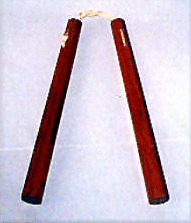 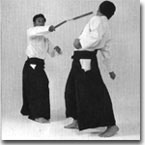
--------------------------------------------------------------------------------
SANAHAKU (3 HANDLE FLAIL)
The Sanshaku is a sister weapon of the Nunchaku. Three equal lengths
instead of two gives the weapon more reach and options for defense
and offence.
SANSETSUKAN (3 HANDLE FLAIL)
The Sansetsukon or three sectional staff can be used as a long ranged
weapon and swung freely or a short lunge weapon when two sections
are held and used to strike or parry.

--------------------------------------------------------------------------------
KAMA
The kama can be employed
to slash, hook, stick, stab, block and deflect.
Kama are Okinawan and Chinese weapons that resemble traditional farming devices similar to a sickle. It was originally a farming implement, used for reaping crops. During the Japanese invasion of Okinawa, all traditional weapons were outlawed. This led to the development of the kama and other Kobudo weapons.
The kama traditionally consists of an inwardly curved blade mounted perpendicularly on the end of a wooden handle, although metal variants are not unheard of. The handle itself is typically the same length as its user´s forearm. It is a slashing and stabbing weapon that is effective for melee combat. The curved blade make it effective as deflecting an opponent´s weapon. Additionally, because of its relatively short length, it can be quickly manoeuvred in many ways that longer weapons, such as the katana and bo cannot
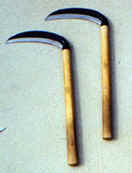 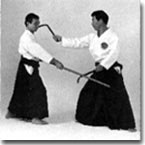
KUSARIGAMA (KAMA WITH ATTATCMENT)
The Kusarigama (kama with rope or chain attached) is used like the
kama but has the capability of twirling and trapping the opponent
or opponents weapon with the rope. This weapon was made famous by
Sensei Tadashi Yamashita through his demonstrations and in the film "The Octagon" with Chuck Norris.
THE ORIGINAL USE OF THE KAMA
The Kama or sickle was used to harvest rice. The Kama can be employed
to slash, hook, stick, stab, block and deflect.
--------------------------------------------------------------------------------
TONKUA or TONFA
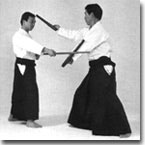 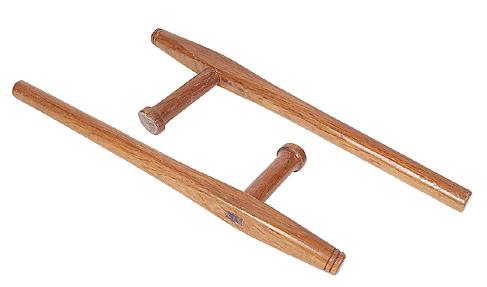
The Tonkua a wooden implement that played an important role in the
history of kobudo, tools such as the tonfa (tuifa, ), which were
used as grist mill handles, served as effective weapons.
The Tonfa is a stick approximately 18 inches long with a side handle approximately 5 inches long usually made of a hard wood such as red or white oak.
The people of Okinawa were forbidden to own or carry weapons like swords by the Japanese invaders and had to find weapons made from everyday items.
The tonfa was originally a wooden handle that fitted into a hole on the side of a millstone used to grind rice and other grains, dating back to 15th century Okinawa. The handle, which was easily disengaged from the millstone, became a very effective weapon of defence.
The Tonfa´s circular movements as a farm implement evolved into its rotating strikes as a dangerous weapon. It can be used to block or parry another weapon and can also be spun in a circular motion to thrust or strike attack. Good body movement can make this weapon formidable.
By spinning the tonfa around by the short handle, a great tremendous striking force may be generated. By using the long portion in conjunction with the short handle, the tonfa may be used for arm locks or to control an opponent.
No other weapon short of a sword can penetrate your blocks when you correctly use the tonfa to reinforce them. A nunchaku, knife, bat, or bo will bounce off the strong tonfa. When the tonfa is held down the forearm, the arm is reinforced with two inches of rock-hard wood. Two tonfa´s were often used simultaneously, and were very efficient against armed assailants. The side of the tonfa was used for blocking, and the ends for direct punches. Continued practice with the tonfa can help improve balance, coordination and physical strength.
--------------------------------------------------------------------------------
JI-KUWA (PINS)
The Ji-Kuwa (Okinawan hair pins) is a weapon that is easily hidden
either in the hair or inside clothing. Used for close distance fighting.
--------------------------------------------------------------------------------
SHURIKEN (THROWING STAR)
The Shuriken (throwing star) is a Japanese dart used for striking
an opponent at a distance. The edges were often dipped in poison
or horse dung to start infection on the assailant.

--------------------------------------------------------------------------------
SAI (PRONGED FORK)
The Sai, which is a three-pronged metal truncheon, were often used
in sets of two or three for the purpose of entrapping an attacker's
weapon and using the pronged ends in a jabbing, puncturing strike.
Although the exact origin of the sai is obscure, it closely resembles
an instrument that was used in China, and is also believed to have
been derived from a farming implement that was used for digging
furrows in the ground for planting seeds. A third sai was often
carried behind the back in the belt sash (obi) as a replacement
for a hand-held sai that was thrown.
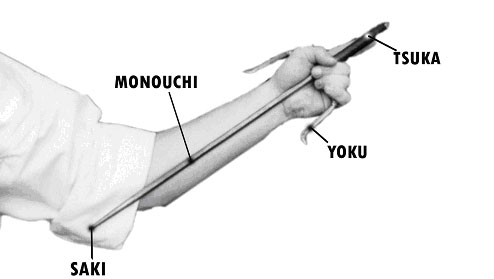 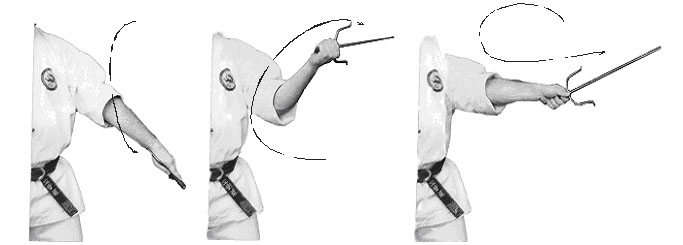 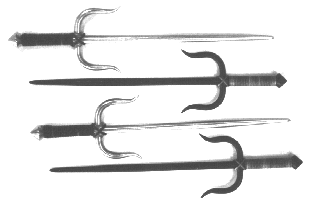
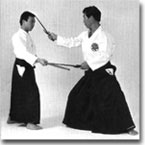
--------------------------------------------------------------------------------
MANJI SAI
The Manji Sai or Nunti Sai is similar to the sai with one prong
facing in the opponents direction. Can be used in close quarters
or for throwing.
--------------------------------------------------------------------------------
SURUCHIN
The Suruchin is a six foot piece of hemp rope with rocks secured
to the ends, used for long range defense, trapping and striking.
--------------------------------------------------------------------------------
KENDO (PROTECTION EQUIPMENT)
Protective gear used in the Japanese art of fencing, known as Kendo.
Included are the shinai (bamboo practice sword), kote (hand and wrist
protectors), men (head protector), do (body protector) and Kendo
gi (uniform).
--------------------------------------------------------------------------------
SHINAI (KENDO PRACTICE SWORD)
Shinai - Kendo (Japanese fencing) sword, four foot bamboo sword
--------------------------------------------------------------------------------
TINBEI & ROCHIN
Tinbei and Rochin Sword or spear (or short sword), and shield. This
weapon combination has Chinese roots.
--------------------------------------------------------------------------------
KATANA (JAPANESE SWORD)
The Japanese Samurai Sword or Katana is the famous weapon of the
Japanese samarai. The art of the sword is called Iado.
Katana is the word for "sword" in the Japanese language. It is also used specifically for a type of Japanese backsword or long-sword in use after the 1400s, a curved, single-edged sword traditionally used by the samurai.
The katana was typically paired with the wakizashi or shoto, a similarly made but shorter sword, both worn by the members of the warrior class. It could also be worn with the tanto, an even smaller similarly shaped blade. The two weapons together were called the daisho, and represented the social power and personal honour of the samurai. The long blade was used for open combat, while the shorter blade was considered a side arm, more suited for stabbing, close quarters combat and seppuku, a form of ritual suicide.
The katana was primarily used for cutting, and intended for use with a two-handed grip. It is traditionally worn edge up.
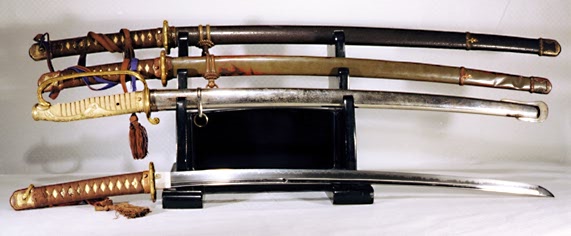
--------------------------------------------------------------------------------
TECCHU
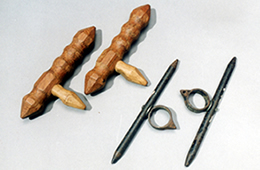
--------------------------------------------------------------------------------
NAGINATA
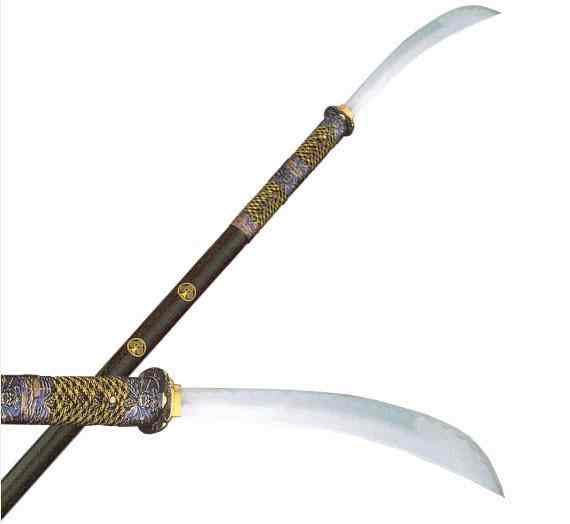
The naginata is a weapon that was used extensively in feudal Japan. Described by some as simply "a sword on the end of a long pole", the naginata was actually a sophisticated weapon which required considerable skill and stamina to use effectively in battle. It consisted of a curved blade, 1 to 2 feet in length, mounted onto an oak shaft that was usually 5 to 9 feet long. Attached to the butt end of the shaft was a sharp end-cap, or ishizuki, which was used to pierce between the plates of an attacker´s armour.
Although the exact origin of the naginata is not known, one theory states that the naginata evolved from a simple farming tool used for chopping. In the early part of the third century BC, farmers attached sharp stones to the end of long wooden shafts. Later, metal was used in place of the stones.
Despite the uncertainty surrounding its origin, it is a well-known fact that the naginata was being fully utilized in battle by the 10th century. Cavalry battles had become more important by this time, and it was difficult to repel mounted warriors simply by means of the bow, arrow, and sword. The naginata proved to be a superb weapon for close-up fighting; it´s sweeping arcs of destruction were used to cut a horse´s legs and kill its rider once the horse fell to the ground. Off the battlefield, the naginata was also used by women as a means of protecting themselves and their children while the men were away in battle or working in the fields. Because of the size and reach of the weapon, a woman could keep an attacker at a safe distance.
--------------------------------------------------------------------------------
--------------------------------------------------------------------------------
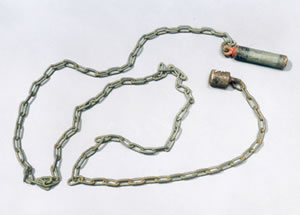
----------------------------------------------------------------------------
HISTORY OF KOBUDO
It
is very difficult to tell the true story about the development of
the Okinawa Kobudo because almost all written documents about it
were destroyed in the bombings and the outbreaks of fire that followed
during the second world war.
However,
it seems that in the 12th century, regional lords called aji emerged
and exerted power from their fortified manors called gusuku. Soon
power was divided among three small kingdoms in 1326, which led
to a lot of internal and continuous warfare until 1429. This was
the best period to develop and perfect martial arts combat techniques.
In 1429,
Sho Hashi united the island and founded the Kingdom of the Ryukyus.
During the 14th to 16th centuries, a period known as the "Golden
Age of Trade", the Kingdom flourished as a trade center for China
and other nations. However, trade vessels were constantly threatened
by Japanese pirates and the Okinawa sailors needed to protect themselves
while in foreign lands. Around 1580, Toyotomi Hideyoshi stated laws
again that prohibited the possession or the carrying of weapons,
in order to restore peace and bring some sort of prosperity to a
resource poor Ryukyuan kingdom.
It helped
to prevent unnecessary loss of life among the people and was a deterrent
to insurrection and civil wars. But that left the peasants of Okinawa
more or less defenseless against the Samurai, which were the only
ones allowed to carry weapons. Although the empty hand techniques
developed on the battlefields were very effective and refined,
they were not so for use in massive defense or offense operations.
In 1609,
the Satsuma Samurai Clan attacked and swept the Okinawan defenses.
The islanders used turtleshields and short strabbing daggers, but
they were of very little use against horseback, sword carrying
samurai or bows. The only instruments the farmers had were their
simple farming tools. The unique martial arts of Okinawan karate
and kobudo were born from this background. Over long years, the
techniques of Chinese and South East Asian martial arts were incorporated
into Okinawa Karate and Kobudo to establish the forms known today.
The chinese methods were a combination of techniques with empty
hands and with weapons like the San-Ku-Chu, ancestor of the SAI.
The stick
techniques were already used by some okinawaian peasants who had
to protect themselves against pillagers. Some new weapons were made
using as example tools used from peasants, for instance the NUNCHAKU
and the TONFA or the KAMA which was the unique tool with a metal
part used at that time.
Varied distinct
styles emerged during the heyday of the Ryukyuan kingdom: Shuri-ti
forms were centered in the Ryukuan capital of Shuri, Naha-ti in
the commercial center of Naha, and Tomari-ti in the Tomari district
located between the first two. Each style had its distinguished
masters who established the traditions preserved to our present
day. The techniques of Karate and Kobudo were, by their nature,
to be kept from the uninitiated.
Thus, there
are but few historical records and the arts were conveyed almost
entirely through personal oral transmission from master to disciple.
Since the invasion of the Satsuma Samurai Clan, Okinawa was ruled
by a weak government under orders of the Shogun, until the upcoming
of the Meiji restoration, halfway the 19th century where, following
the dissolution of the kingdom and the 1879 annexation of Okinawa
as a prefecture, new institutions came into effect and Karate and
Kobudo were incorporated into the Meiji public education system.
There followed a movement to present these arts to the general public:
during the Taisho Era (circa 1910-1926), demonstrations were made
throughout mainland Japan, and in the early Showa years (circa main
schools - ryu): Shorin-ryu, Gojyu-ryu, Uechi-ryu and Matsubayashi-ryu.
Today, there exist many more sub-schools (ryuha) and factions (kaiha).
Each boasts its own distinctive kata derived from the basic movements
(kihon kata) common to all schools as the systematization of techniques
of attack and defense.
Rigorous
training over years cultivates both physical and spiritual strength.
Thus these traditional arts contribute to building character, to
fostering a sense of social responsibility, and to the healthy development
of young bodies and minds. In offering the disciplines of both martial
arts and sports, Okinawa karate and kobudo today give inspiration
to people throughout the world.
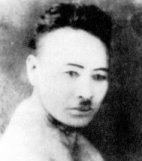 Modern
Kobudo was founded by Shinko Matayoshi (1888-1947), born in the
Naha region from a wealthy family. His kobujutsu training began
in his early teens and included kobujutsu, kamajutsu, ekujutsu,
tonfajutsu and nunchakujutsu. At the age of 22, he ventured into
Manchuria by way of northern Japan. There he joined a team of mounted
bandits and learned several other weapons arts, including the bow
and arrow, all from horseback making them unique from other Okinawan
Kobujutsu styles. Later, after returning to Okinawa, he traveled
to Fuchow and Shanghai were he learned even more weapons arts in
addition to acupuncture, herbal medicine and another form of Shaolin
boxing. Modern
Kobudo was founded by Shinko Matayoshi (1888-1947), born in the
Naha region from a wealthy family. His kobujutsu training began
in his early teens and included kobujutsu, kamajutsu, ekujutsu,
tonfajutsu and nunchakujutsu. At the age of 22, he ventured into
Manchuria by way of northern Japan. There he joined a team of mounted
bandits and learned several other weapons arts, including the bow
and arrow, all from horseback making them unique from other Okinawan
Kobujutsu styles. Later, after returning to Okinawa, he traveled
to Fuchow and Shanghai were he learned even more weapons arts in
addition to acupuncture, herbal medicine and another form of Shaolin
boxing.
Shinko Matayoshi, along with Gichin Funakoshi, was the first to
publicly demonstrate Okinawan kobudo to mainland Japan in 1915.
With the 1921 royal visit of Emperor Hirohito on Okinawa, Matayoshi
performed kobudo at a demonstration with Naha-te master Chojun Miyagi.
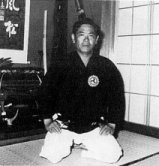 Shimpo
Matayoshi (1922-1997), Hanshi 10th Dan, son of Shinko, started his
martial arts training at age 8 under Chotoku Kyan. Upon his fatherâ€Ts
return in 1934, began to train in karate and kobudo under his fatherâ€Ts
tutelage. In 1935, he began studying with Gokenki, learning the
same Hakutsuru (White Crane Chaun' fa) that his father had been
taught. Upon his fatherâ€Ts death, he continued the
legacy and assumed the teaching responsibilities. Shimpo
Matayoshi (1922-1997), Hanshi 10th Dan, son of Shinko, started his
martial arts training at age 8 under Chotoku Kyan. Upon his fatherâ€Ts
return in 1934, began to train in karate and kobudo under his fatherâ€Ts
tutelage. In 1935, he began studying with Gokenki, learning the
same Hakutsuru (White Crane Chaun' fa) that his father had been
taught. Upon his fatherâ€Ts death, he continued the
legacy and assumed the teaching responsibilities.
In 1970, he formed the All Okinawa Kobudo Federation (Zen Okinawa
Kobudo Renmei) and until his untimely death in 1997 was the technical
advisor for all Okinawan Kobudo styles. He was also one of the last
surviving students to learn to rare Hakutsuru directly from an authentic
Chinese master. In his travels demonstrating his unique style of
Kobudo, he was constantly besieged to demonstrate the Hakutsuru,
which he never taught openly to anyone. His knowledge of the elusive
Crane was unparalleled.
|
































 Modern
Kobudo was founded by Shinko Matayoshi (1888-1947), born in the
Naha region from a wealthy family. His kobujutsu training began
in his early teens and included kobujutsu, kamajutsu, ekujutsu,
tonfajutsu and nunchakujutsu. At the age of 22, he ventured into
Manchuria by way of northern Japan. There he joined a team of mounted
bandits and learned several other weapons arts, including the bow
and arrow, all from horseback making them unique from other Okinawan
Kobujutsu styles. Later, after returning to Okinawa, he traveled
to Fuchow and Shanghai were he learned even more weapons arts in
addition to acupuncture, herbal medicine and another form of Shaolin
boxing.
Modern
Kobudo was founded by Shinko Matayoshi (1888-1947), born in the
Naha region from a wealthy family. His kobujutsu training began
in his early teens and included kobujutsu, kamajutsu, ekujutsu,
tonfajutsu and nunchakujutsu. At the age of 22, he ventured into
Manchuria by way of northern Japan. There he joined a team of mounted
bandits and learned several other weapons arts, including the bow
and arrow, all from horseback making them unique from other Okinawan
Kobujutsu styles. Later, after returning to Okinawa, he traveled
to Fuchow and Shanghai were he learned even more weapons arts in
addition to acupuncture, herbal medicine and another form of Shaolin
boxing.  Shimpo
Matayoshi (1922-1997), Hanshi 10th Dan, son of Shinko, started his
martial arts training at age 8 under Chotoku Kyan. Upon his fatherâ€Ts
return in 1934, began to train in karate and kobudo under his fatherâ€Ts
tutelage. In 1935, he began studying with Gokenki, learning the
same Hakutsuru (White Crane Chaun' fa) that his father had been
taught. Upon his fatherâ€Ts death, he continued the
legacy and assumed the teaching responsibilities.
Shimpo
Matayoshi (1922-1997), Hanshi 10th Dan, son of Shinko, started his
martial arts training at age 8 under Chotoku Kyan. Upon his fatherâ€Ts
return in 1934, began to train in karate and kobudo under his fatherâ€Ts
tutelage. In 1935, he began studying with Gokenki, learning the
same Hakutsuru (White Crane Chaun' fa) that his father had been
taught. Upon his fatherâ€Ts death, he continued the
legacy and assumed the teaching responsibilities.